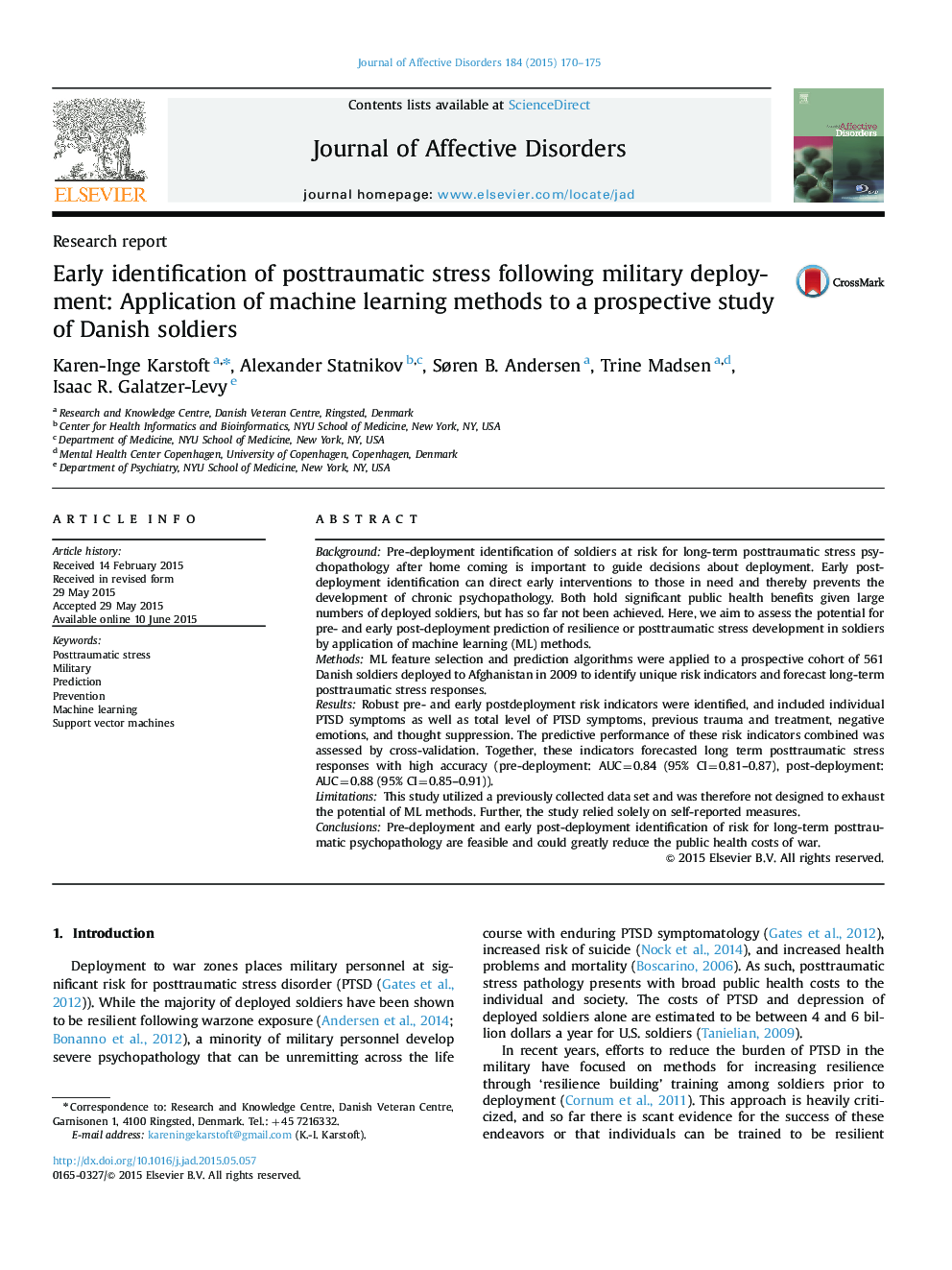| کد مقاله | کد نشریه | سال انتشار | مقاله انگلیسی | نسخه تمام متن |
|---|---|---|---|---|
| 6231277 | 1608141 | 2015 | 6 صفحه PDF | دانلود رایگان |
- We aim to predict long-term posttraumatic stress in deployed soldiers.
- We apply machine learning algorithms to prospectively predict posttraumatic stress.
- Posttraumatic stress is predicted accurately before and after deployment.
- Early trauma, previous treatment, and individual PTSD symptoms are predictive.
- The findings can be implemented to relieve public health burden in deployed soldiers.
BackgroundPre-deployment identification of soldiers at risk for long-term posttraumatic stress psychopathology after home coming is important to guide decisions about deployment. Early post-deployment identification can direct early interventions to those in need and thereby prevents the development of chronic psychopathology. Both hold significant public health benefits given large numbers of deployed soldiers, but has so far not been achieved. Here, we aim to assess the potential for pre- and early post-deployment prediction of resilience or posttraumatic stress development in soldiers by application of machine learning (ML) methods.MethodsML feature selection and prediction algorithms were applied to a prospective cohort of 561 Danish soldiers deployed to Afghanistan in 2009 to identify unique risk indicators and forecast long-term posttraumatic stress responses.ResultsRobust pre- and early postdeployment risk indicators were identified, and included individual PTSD symptoms as well as total level of PTSD symptoms, previous trauma and treatment, negative emotions, and thought suppression. The predictive performance of these risk indicators combined was assessed by cross-validation. Together, these indicators forecasted long term posttraumatic stress responses with high accuracy (pre-deployment: AUC=0.84 (95% CI=0.81-0.87), post-deployment: AUC=0.88 (95% CI=0.85-0.91)).LimitationsThis study utilized a previously collected data set and was therefore not designed to exhaust the potential of ML methods. Further, the study relied solely on self-reported measures.ConclusionsPre-deployment and early post-deployment identification of risk for long-term posttraumatic psychopathology are feasible and could greatly reduce the public health costs of war.
Journal: Journal of Affective Disorders - Volume 184, 15 September 2015, Pages 170-175
